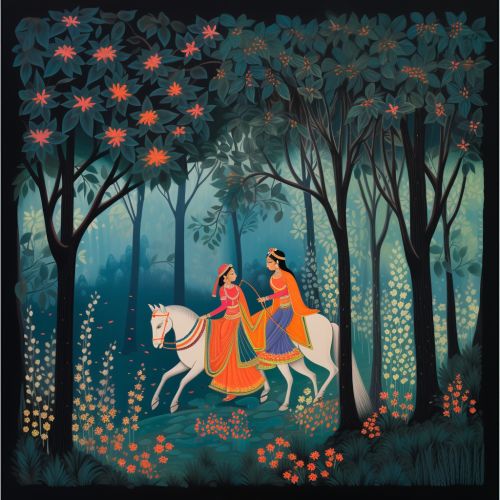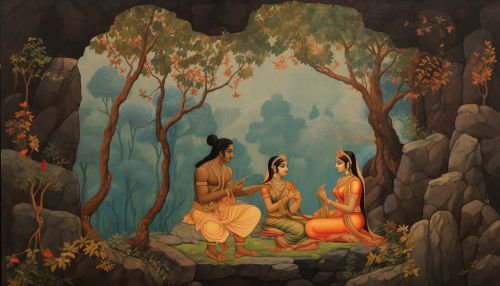Ramayana
Introduction
The Ramayana is one of the two major Sanskrit epics of ancient India, the other being the Mahabharata. Traditionally attributed to the sage Valmiki, the Ramayana narrates the life of Rama, the seventh avatar of the Hindu deity Vishnu. The epic explores themes of dharma (duty, righteousness), loyalty, devotion, and the virtues of the ideal king, ideal servant, ideal brother, ideal wife, and ideal enemy.
Origin and Authorship
The Ramayana is traditionally attributed to the sage Valmiki, who is revered as the Adi Kavi, or the first poet, in Hindu tradition. It is believed that Valmiki composed the Ramayana in Sanskrit, which was the literary language of ancient India. However, the exact date of the composition of the Ramayana remains a subject of scholarly debate.
Structure and Content
The Ramayana is divided into seven books, known as Kandas. These are: Bala Kanda, Ayodhya Kanda, Aranya Kanda, Kishkindha Kanda, Sundara Kanda, Yuddha Kanda, and Uttara Kanda. Each Kanda is further divided into several sargas or chapters, and each sarga is composed of individual shlokas or verses.


Characters
The main characters in the Ramayana include Rama, his wife Sita, his loyal servant Hanuman, his brothers Lakshmana, Bharata, and Shatrughna, and the demon king Ravana. Each character embodies certain virtues and ideals, and their actions and interactions form the crux of the epic narrative.
Themes and Teachings
The Ramayana explores several key themes and teachings, including dharma, loyalty, devotion, and the virtues of the ideal king, ideal servant, ideal brother, ideal wife, and ideal enemy. These themes are woven into the narrative through the actions and interactions of the characters.
Influence and Legacy
The Ramayana has had a profound influence on Indian culture, literature, and religious practices. It has been translated and retold in numerous languages and has inspired countless works of art, music, dance, and drama. The teachings of the Ramayana continue to be relevant in contemporary society, and the characters and stories of the epic continue to be celebrated in religious festivals and cultural events.
